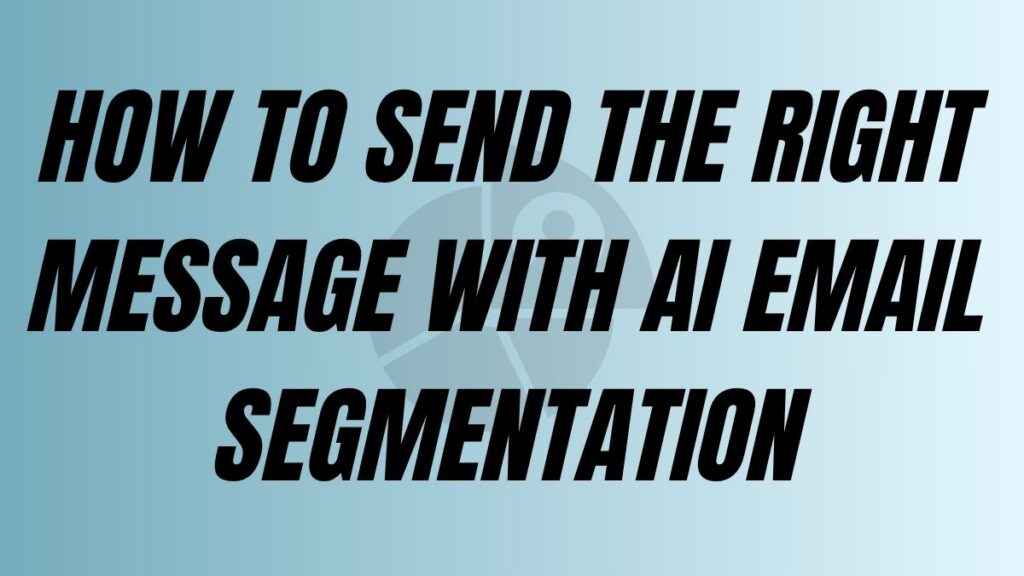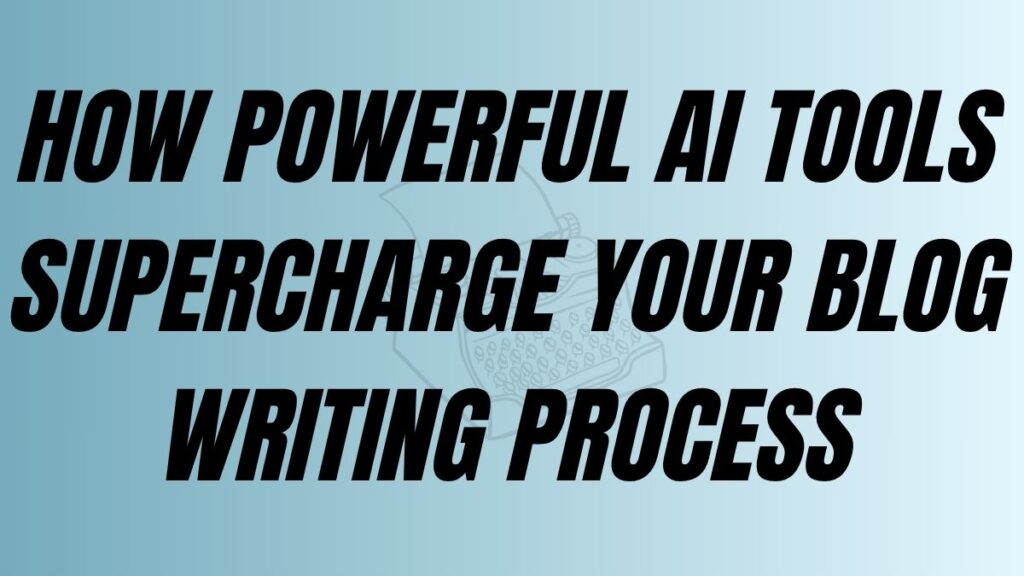Introduction
Far away from AI chatbots, I have my car serviced once a year, not by choice but by necessity. The truth is that I choose the specialist in charge of the maintenance. From this perspective, customer service is part of customer care. When I renew my software license fees, there is no real customer care. It’s more transactional, based on the fees I accept to pay.
Still, I must admit that B2B companies are constantly seeking innovative ways to enhance customer service and generate leads. Artificial Intelligence (AI) chatbots have emerged as a powerful tool that can significantly improve these areas. Let’s discover why implementing AI chatbots is a smart move for B2B companies looking to stay ahead of the curve.

The Strategic Imperative of AI Chatbots for Modern B2B Enterprises
We all remember the first chatbots a decade ago; it was such a pain to get any value from these chats. And I don’t want to get back to the audio services from two decades ago. Artificial intelligence chatbots are rapidly transitioning from a novel technology to a fundamental component of successful business operations. It’s particularly true within the business-to-business (B2B) landscape.
Their ability to transform customer interactions and streamline internal processes presents a compelling case for widespread adoption.
The Multifaceted Benefits of AI Chatbots in B2B Operations
The adoption of AI chatbots in B2B environments yields a multitude of strategic benefits. Let’s discover how they contribute to enhanced efficiency, improved customer relationships, and ultimately, stronger business growth.
Elevating Customer Service to Unprecedented Levels with AI Chatbots
In my student life, it was quite fancy to refer to Paul Virilio; the French urbanist who became famous with his contributions about the role of speed in every aspect of life. In the business world, immediate access to information and support is paramount. AI chatbots excel in providing enhanced customer service through their 24/7 availability. Unlike human agents, chatbots can offer instant responses to customer inquiries at any time, day or night.
This constant availability dramatically improves customer satisfaction by resolving issues promptly and providing immediate assistance. Furthermore, it fosters greater customer loyalty as businesses demonstrate their commitment to providing continuous and accessible support.
The ability of chatbots to handle a high volume of inquiries simultaneously ensures that customers are not left waiting, further enhancing their experience.
Revolutionizing Lead Generation and Qualification
Beyond customer support, AI chatbots play a crucial role in lead generation. By proactively engaging website visitors in real-time, chatbots can initiate conversations. They can answer initial questions, and guide potential customers through the early stages of the sales funnel too. More importantly, they can collect valuable information about visitor needs, interests, and pain points through interactive dialogue.
This gathered data enables businesses to qualify leads more effectively. AI Chatbots identify prospects who are genuinely interested in their offerings and meet specific criteria.
This proactive approach to lead engagement allows B2B companies to focus their sales efforts on the most promising opportunities, leading to improved conversion rates and a more efficient sales process. Chatbots can also seamlessly integrate with marketing automation platforms to nurture leads through personalized follow-ups.
The implementation of AI chatbots offers substantial cost-effectiveness for B2B organizations. By automating customer interactions, businesses can significantly reduce the need for large customer service teams. This reduction in staffing requirements translates into lower salary costs, benefits expenses, and overhead.
I’s true that chatbots require an initial investment for development and implementation. But the long-term cost savings associated with reduced personnel and increased efficiency are considerable. Moreover, human agents can be freed up to focus on more complex issues and strategic tasks that require higher-level cognitive skills. All this leads to better resource allocation and increased overall productivity.
Ensuring Unparalleled Scalability and Consistent Performance
As B2B companies grow, the volume of customer inquiries and support requests often increases exponentially. AI chatbots provide the crucial scalability needed to handle these fluctuations effectively. They can handle numerous conversations simultaneously without any degradation in service quality.
This ensures consistent service even during peak periods, preventing customer frustration and maintaining high levels of responsiveness. Unlike human teams that may struggle to manage sudden surges in demand, chatbots can seamlessly adapt to changing needs, making them an invaluable asset for scaling businesses. This consistent performance across a large number of interactions also contributes to a more predictable and reliable customer experience.
Harnessing the Power of Data Collection and Actionable Insights
Every interaction a chatbot has with a customer generates valuable data. Chatbots gather valuable data on customer interactions, including the types of questions asked, the issues encountered, customer preferences, and pain points. This wealth of information provides invaluable insights into customer behavior.
By analyzing this data, B2B companies can gain a deeper understanding of their target audience, identify areas for improvement in their products or services, and personalize their marketing and sales efforts more effectively. This data-driven approach can inform business strategies across various departments, leading to more targeted product development, enhanced marketing campaigns, and improved overall efficiency.
Furthermore, analyzing chatbot interactions can reveal recurring customer issues, prompting businesses to update their documentation, FAQs, or even product design to proactively address these concerns.
A Detailed Roadmap for Implementing AI Chatbots in B2B
The successful integration of AI chatbots into B2B operations requires careful planning and execution. The following key steps provide a strategic roadmap for effective implementation.
Diligently Identifying High-Impact Use Cases
The first step in implementing AI chatbots is to determine specific areas where chatbots can add the most value. This involves analyzing existing customer interactions, identifying pain points in the customer journey, and recognizing opportunities for automation.
Common use cases in B2B include answering frequently asked questions (FAQs), providing product information, offering technical support for common issues, scheduling appointments for sales teams or product demonstrations, and guiding visitors through the sales funnel by providing relevant content and information based on their needs.
Focusing on high-impact use cases ensures that the chatbot deployment addresses critical business needs and delivers tangible results. It’s also important to consider use cases that can improve internal processes, such as employee onboarding or IT support.
Selecting the Optimal Platform for AI Chatbots
Choosing the right platform is crucial for the success of your chatbot initiative. Numerous chatbot platforms are available, each with its own set of features, capabilities, and pricing models. When selecting a platform, it’s essential to consider factors like integration options with your existing business systems (CRM, marketing automation, etc.), the level of customization features available to align with your brand and specific needs, the platform’s ease of use for both development and management, and the quality of its analytics capabilities for monitoring performance.
Consider whether you require a code-based platform for advanced customization or a low-code/no-code platform for ease of use. The platform’s scalability and security features are also critical considerations.
Thoroughly Training Your AI Chatbot for Optimal Performance
The efficacy of a chatbot is directly proportional to the depth and breadth of its knowledge. To maximize its potential, a robust and comprehensive knowledge base is paramount. This foundational repository should encompass a wide array of information, including but not limited to, meticulously crafted answers to frequently asked questions (FAQs), detailed product documentation, clear and concise service guidelines, and any other pertinent data that customers might require.
Beyond mere information storage, effective training is crucial for the chatbot to competently handle common customer inquiries. This involves exposing the chatbot to an extensive collection of real-world conversation examples, allowing it to learn from diverse interactions. Furthermore, anticipating user inputs and providing the chatbot with a broad spectrum of potential questions and statements will significantly enhance its ability to understand and respond appropriately.
Maintaining the accuracy and relevance of the chatbot’s responses necessitates a commitment to regular updates of its knowledge base. This includes incorporating new information as it becomes available, integrating product updates, and adding solutions to emerging issues. This continuous refinement ensures that the chatbot remains a reliable and up-to-date resource for users.
Crucially, Natural Language Processing (NLP) capabilities are the backbone of a truly conversational chatbot. NLP enables the chatbot to interpret and understand user queries in a natural, human-like manner, moving beyond simple keyword recognition to grasp the nuances of language, intent, and context. This understanding is vital for generating relevant and helpful responses.
Finally, the journey to a highly effective chatbot is one of continuous improvement. Ongoing training and refinement, driven by performance monitoring and feedback, are essential for incrementally enhancing the chatbot’s accuracy, refining its conversational flow, and ultimately, improving its overall effectiveness over time. This iterative process allows the chatbot to adapt to evolving user needs and information, ensuring its long-term value.
Seamlessly Integrating AI Chatbots with Existing Business Ecosystems
For a chatbot to be truly effective and deliver maximum value, it must operate as an integral part of your existing technological ecosystem, rather than a standalone tool. This necessitates deep and strategic integration with your core business infrastructure.
A crucial first step is to integrate the chatbot with your CRM (Customer Relationship Management) system. This integration is fundamental for several reasons:
- Automatic Logging of Interactions: Every conversation, query, and customer touchpoint handled by the chatbot can be automatically recorded within the CRM. This creates a comprehensive historical record for each customer.
- Real-time Lead Information Updates: As the chatbot gathers new data from customer interactions (e.g., changed contact details, new preferences, specific product interests), this information can instantly update corresponding lead or customer profiles in the CRM. This ensures that your customer data is always current and accurate.
- Holistic View of Customer Engagements: By centralizing chatbot interactions within the CRM, sales, marketing, and support teams gain a complete, 360-degree view of customer journeys. They can see not only direct human interactions but also all automated engagements, providing richer context for future outreach and support.
Beyond the CRM, it’s equally important to integrate with other critical business systems. This broader integration strategy is key to optimizing operational efficiency and customer satisfaction:
- Marketing Automation Platforms: Integrating the chatbot with marketing automation tools allows for seamless lead nurturing. For example, based on chatbot conversations, customers can be automatically added to specific email campaigns, receive targeted content, or be segmented for personalized marketing efforts. This ensures a consistent and personalized brand experience across all marketing channels.
- Ticketing Systems (Help Desks): When a chatbot cannot fully resolve a customer’s query or a human intervention is required, integration with ticketing systems is paramount. The chatbot can automatically create support tickets, pre-populate them with conversation transcripts and relevant customer data, and even route them to the appropriate department or agent. This dramatically speeds up resolution times and improves customer satisfaction by reducing friction.
- Knowledge Base Platforms: A robust integration with your knowledge base is vital for the chatbot’s ability to provide accurate and immediate answers. The chatbot can draw information directly from the knowledge base to respond to common questions, offer troubleshooting steps, or provide product details. This not only empowers customers with self-service options but also ensures that the chatbot’s responses are consistent with official company information.
The overarching goal of these integrations is to streamline workflows and ensure data consistency across all touchpoints. When systems communicate seamlessly:
- Workflows become more efficient: Manual data entry is minimized, hand-offs between systems are automated, and employees are freed from repetitive tasks, allowing them to focus on more complex, high-value activities.
- Data integrity is maintained: Information flows accurately and consistently between platforms, eliminating data silos and reducing the risk of discrepancies or outdated information. This leads to more reliable reporting and better decision-making.
Ultimately, seamless integration allows for a more unified and efficient customer experience. Customers receive consistent information and support, regardless of the channel they use. Furthermore, it provides valuable context for both the chatbot and human agents when escalations occur. When a chatbot needs to hand off a conversation to a human, the agent instantly has access to the full conversation history and relevant customer data, enabling them to pick up exactly where the chatbot left off without the customer having to repeat themselves. This enhances the perception of a cohesive and responsive organization, fostering greater customer loyalty and operational effectiveness.
Continuously Monitoring and Strategically Optimizing Performance
The journey of implementing a chatbot extends far beyond its initial launch; it is a dynamic and iterative process demanding continuous attention and refinement. To ensure the chatbot remains a valuable asset, it’s imperative to continuously monitor its performance through a comprehensive suite of key metrics. These include, but are not limited to, the total volume of conversations successfully handled, the resolution rates (indicating the percentage of queries the chatbot can resolve independently), customer satisfaction scores (often gathered through post-interaction surveys), and crucially, fall-back rates (highlighting instances where the chatbot is unable to provide a satisfactory answer and escalates the query or directs the user elsewhere).
Beyond quantitative data, a deep dive into analyzing customer interactions is paramount. This involves meticulously reviewing conversation transcripts, identifying common user queries, observing instances of frustration or confusion, and pinpointing repetitive patterns in user behavior. This qualitative analysis helps to delineate not only where the chatbot excels in delivering efficient and accurate responses but also illuminates critical areas that are ripe for improvement. For example, are users consistently asking the same question in different ways? Is the chatbot misinterpreting certain keywords or phrases? Are there specific intents it consistently fails to address?
Based on these insightful analyses, a proactive approach is required to make adjustments to optimize its effectiveness. This optimization can manifest in various forms. It may involve refining the chatbot’s knowledge base by adding new information, updating existing answers, or restructuring content for greater clarity and accessibility. Retraining the chatbot with fresh data, especially from newly identified common queries or edge cases, is crucial for its ongoing learning and adaptation. Adjusting conversation flows – perhaps simplifying complex paths, adding clarifying prompts, or introducing more natural language processing capabilities – can significantly enhance user experience.
Furthermore, staying abreast of the latest features and functionalities offered by the chatbot platform can unlock new possibilities for engagement and assistance, such as integrating with other systems or leveraging advanced AI capabilities. A highly effective strategy for continuous improvement is A/B testing.
By presenting different versions of chatbot responses, conversational paths, or even entire user flows to distinct user groups, organizations can empirically identify which strategies yield the most effective outcomes in terms of resolution, satisfaction, and efficiency. This data-driven approach removes guesswork and ensures that optimizations are based on real-world performance. Ultimately, consistent and methodical review alongside ongoing optimization are absolutely critical for ensuring that the chatbot not only continues to deliver significant value to the organization but also adeptly meets the ever-evolving needs and expectations of its users.
Conclusion
For B2B companies, integrating AI chatbots is a strategic imperative to elevate customer service and boost lead generation. These indispensable tools offer continuous 24/7 support, remarkable cost-efficiency, and the capacity for valuable data acquisition, proving crucial in today’s intense market. By meticulously deploying and fine-tuning AI chatbots, businesses can substantially enhance customer interaction and foster growth.
FAQs About AI Chatbots
What are the primary benefits of AI chatbots for B2B companies?
AI chatbots offer 24/7 customer service, improved lead generation and qualification, significant cost savings, enhanced scalability, and valuable data collection for actionable insights.
How do AI chatbots improve lead generation?
Chatbots proactively engage website visitors, answer initial questions, collect valuable information about needs and interests, and qualify leads more effectively, focusing sales efforts on promising opportunities.
What role does data play in AI chatbot implementation?
Chatbots gather data on interactions, questions, and preferences, providing insights into customer behavior. This data informs business strategies, improves product development, and enhances marketing and sales efforts.
Why is continuous monitoring important for chatbot performance?
Continuous monitoring helps identify areas for improvement. Analyzing metrics like resolution rates and customer satisfaction, along with interaction transcripts, ensures the chatbot remains effective and meets evolving user needs.




